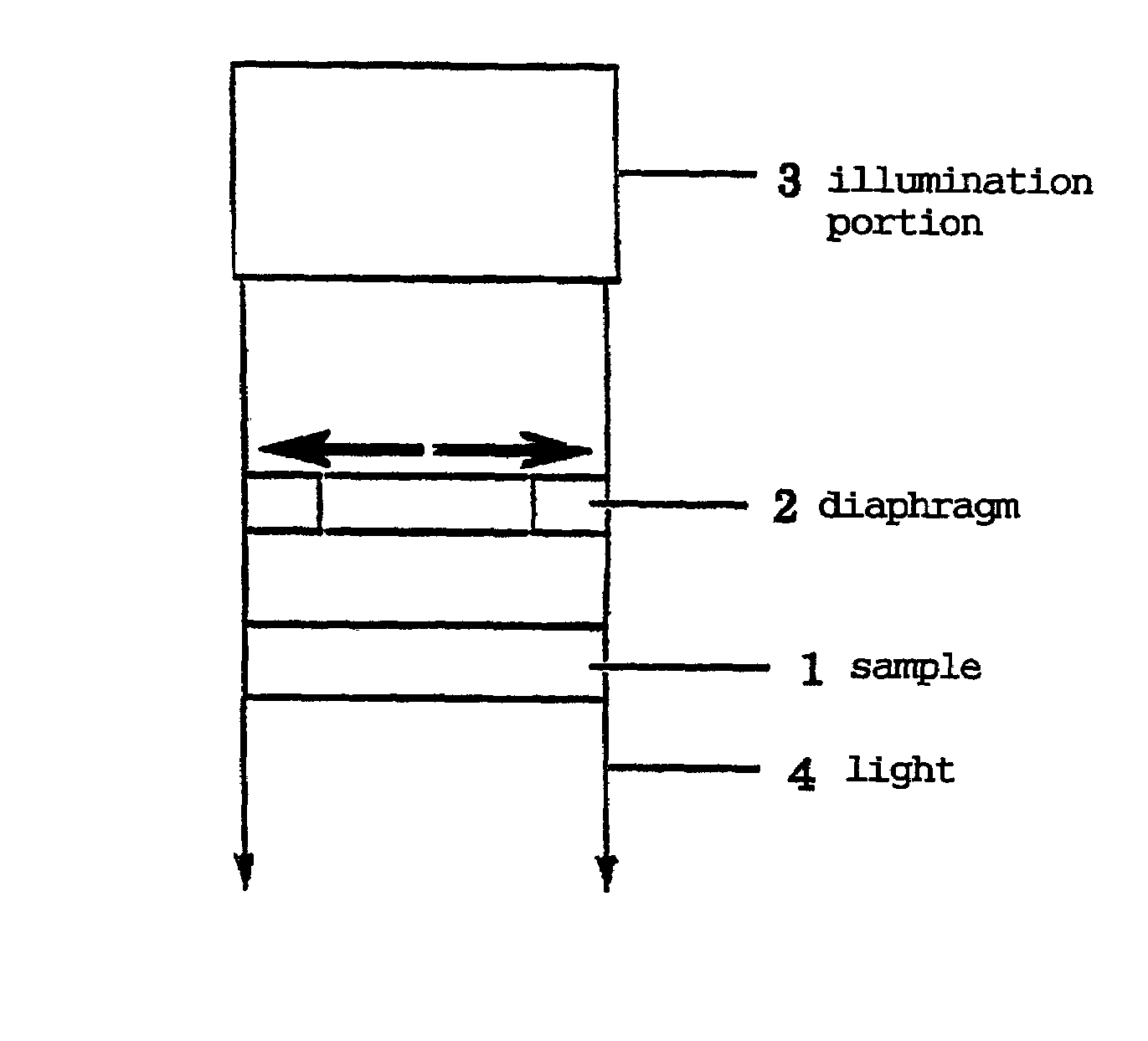Radiation-sensitive composition changing in refractive index and method of changing refractive index
a composition and refractive index technology, applied in the field of radiation-sensitive refractive index composition changing, can solve the problems of difficult to provide a wider refractive index distribution and material deterioration, and achieve the effects of stable optical material regardless of use conditions, stable refractive index pattern, and high film strength
- Summary
- Abstract
- Description
- Claims
- Application Information
AI Technical Summary
Benefits of technology
Problems solved by technology
Method used
Image
Examples
synthesis example 4
of Component (A)
[0236]100.04 g of 2-(2,2,3,3,4,4,4-heptafluorobutyl)succinic acid and 38.72 g of dimethyldichlorosilane were dissolved in 200 g of N-methylpyrrolidone in a 500-ml three-necked flask in an argon atmosphere. To this solution was added a solution obtained by dissolving 47.46 g of pyridine in 50 g of N-methylpyrrolidone under agitation and cooling with ice in 1 hour. After the end of addition, the reaction solution was heated at 60° C. to carry out polymerization for 24 hours. After the end of polymerization, the reaction solution was injected into 2 liters of methanol for precipitation, dissolved in 200 ml of N-methylpyrrolidone again and re-precipitated with 2 liters of methanol for purification.
[0237]The precipitated polymer was separated by filtration and vacuum dried at 5° C. to obtain 109.86 g of a polymer (A-4). The weight average molecular weight of the obtained polymer was 14,200.
synthesis example 5
of Component (A)
[0238]A solution obtained by dissolving 83.08 g of hexafluoroglutaric acid dichloride in 400 ml of chloroform was fed to a 1-liter three-necked flask in an argon atmosphere, and a solution obtained by dissolving 18.62 g of ethylene glycol and 33.66 g of potassium hydroxide in 200 ml of ion exchange water was added to the obtained solution and stirred to carry out interfacial polycondensation. After 6 hours of the reaction, the reaction solution was purified twice by re-precipitation with a mixed solvent of tetrahydrofuran and methanol.
[0239]The precipitated polymer was separated by filtration and vacuum dried at 50° C. to obtain 59.87 g of a polymer (A-5). The weight average molecular weight of the obtained polymer was 16,700.
synthesis example 6
of Component (A)
[0240]72.02 g of hexafluoroglutaric acid and 72.59 g of 1,4-dibromocyclohexane were dissolved in 300 g of N-methylpyrrolidone in a 1-liter three-necked flask in an argon atmosphere. 181.60 g of 18-crown-6-ether complex and 99.50 g of potassium carbonate were added to the obtained solution. The resulting solution was heated at 60° C. under agitation to carry out polymerization for 24 hours. After the end of polymerization, the reaction solution was injected into 2 liters of methanol for precipitation, dissolved in 200 ml of N-methylpyrrolidone again and re-precipitated with 2 liters of methanol for purification.
[0241]The precipitated polymer was separated by filtration and vacuum dried at 50° C. to obtain 73.00 g of a polymer (A-6). The weight average molecular weight of the obtained polymer was 15,300.
PUM
| Property | Measurement | Unit |
|---|---|---|
| refractive index | aaaaa | aaaaa |
| refractive index distribution | aaaaa | aaaaa |
| refractive index | aaaaa | aaaaa |
Abstract
Description
Claims
Application Information
 Login to View More
Login to View More - R&D
- Intellectual Property
- Life Sciences
- Materials
- Tech Scout
- Unparalleled Data Quality
- Higher Quality Content
- 60% Fewer Hallucinations
Browse by: Latest US Patents, China's latest patents, Technical Efficacy Thesaurus, Application Domain, Technology Topic, Popular Technical Reports.
© 2025 PatSnap. All rights reserved.Legal|Privacy policy|Modern Slavery Act Transparency Statement|Sitemap|About US| Contact US: help@patsnap.com



